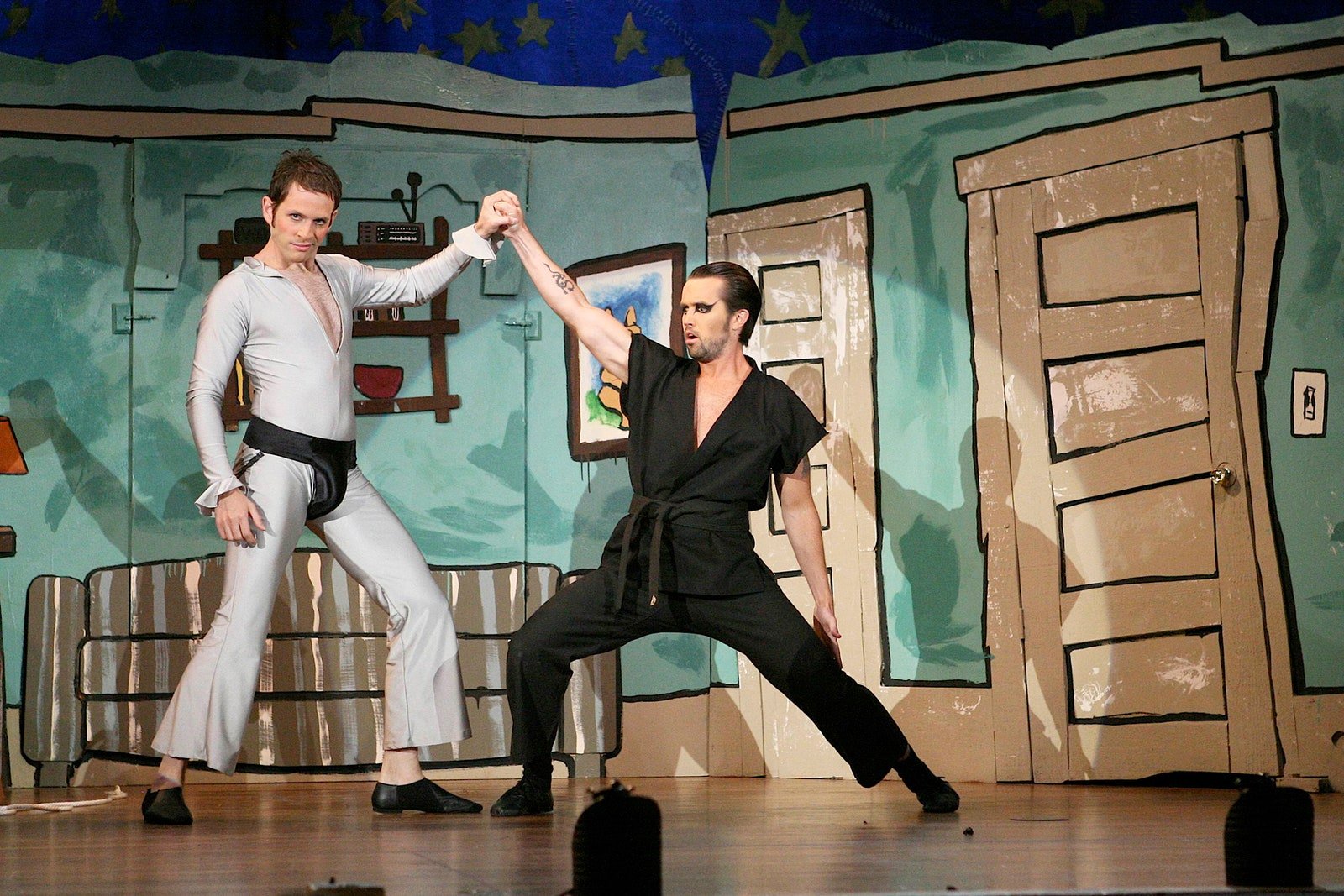The Unexpected Parallels Between “Die Zauberflote” and the “It’s Always Sunny in Philadelphia” Musical
It was the morning after my dad and I ventured to the Metropolitan Opera House to watch Simon McBurney’s staging of Die Zauberflote. My father is notorious for sleeping through anything, be it a family dinner, a museum visit, or a play. So when I asked him- a bit hesitantly- what he thought of the German-speaking opera we saw the night before, I was surprised he had the same question as me: “What was the plot?”
Well, now I’m going to tell you: Wolfgang Amadeus Mozart (music) and Emanuel Shikaneder’s Die Zauberflote (known as The Magic Flute in the English translation) begins with Tamino, who is our male lead and something of a young ingenue. He is stranded in the woods, and a serpent attempts to bite him. Before the snake can get to him, he is rescued by three mysterious women, who all take romantic interest in him. They leave, and Papageno, the bird catcher and Tamino’s soon-to-be wacky sidekick, enters. The Wyrd Sisters-like trio reappears, and they share a portrait of the Princess, Pamina, with Tamino. Tamino falls in love instantly. But the Princess is in trouble. Tamino must rescue her from Sarastro. Three little boys will watch over Tamino and guide him on his journey. And the magic flute.
This plot sounded familiar to me, and initially, I thought this was all building to be a substantial hero’s journey a la Joseph Campbell. The set up was grand, with so many moving pieces: the trio of women, Papageno as comedic relief and companion, a magic flute, and three young boys as spiritual guides.
The plot sounded familiar to me because it was just about as arbitrarily mystical as Charlie’s musical in Season 4 Episode 13 of It’s Always Sunny in Philadelphia, The Nightman Cometh. In the musical, there is a Princess and a Little Boy. Upon first glance, the Princess falls in love with the Boy immediately. But then, the Princess is taken away by a mean troll. The Boy must free her from this troll. But in the meantime, the Nightman is coming for the boy’s soul. The troll tells the Nightman that he must pay “the troll toll” in order to get to the boy’s soul. But then, the Boy fights back against the Nightman and turns into Dayman. Now, the Princess is freed, and she can finally be with the Boy-turned-Dayman.
The Nightman is defeated by the Boy…
And as I’m actually thinking about it, I think this plot might have more to it than even The Magic Flute…
For one, as soon as the Boy turns into the Dayman, everything in the world of the (albeit wacky) musical is resolved. And it can all be resolved magically and quickly because it was all set up just as magically and quickly. Although, in Die Zauberflote, Tamino reaches the Princess very quickly within the first act. He is successful in rescuing her, and yet, he is still told he must go through many more “trials.” And many of these “trials” he and Pamina must go through together. At one point, Sarastro orders him not to speak to Pamina. The princess, in her distress, briefly considers killing herself over it all. Later on, they go through the trials of “water” and “fire.” Once they have made it through, they can finally be together with no obstacles.
Tamino and Pamina going through their “trials” in the ENO production…
But it is still completely unclear as to how these “trials” have transformed the plot, or how the magic flute itself or the three women or the three boys have impacted in any way on the mission to rescue the princess. The piece is fully loaded with mysticism without enacting any of that mysticism at all.
To Simon McBurney’s credit, his staging is a sleight of hand trick in itself: it distracts you from the fact that there is pretty much no real plot here. The use of live drawing and puppetry, and live broadcasting and projection to map these different textures and media onto the stage itself, are the points at which the real magic manifests. Papageno, as a shadow puppet, moves down the alps (a cardboard construction of a mountain) before manifesting as the real actor on stage. The three boys, likewise, appear as three shadow puppets in the sky just before the real child actors manifest on a never-before-seen platform high above the stage. And, with little more than a chalkboard, some chalk, and a few small slats, in one moment, the live drawing actually traces the sound’s journey through the magic flute. In another, an enormous shelf of books appears— a brilliant and successful scenographic and choreographic illusion as Papageno “pushes” the books off of the shelf, attempting to open the portal.
And, of course, it goes without saying that Mozart’s music is great. But I’m much more inclined to focus on McBurney’s re-imagining of the piece.
I couldn’t tell you why the It’s Always Sunny musical was in my head. Perhaps it was because of the “Princess who needs rescue” trope, or the “Princess being held hostage by an evil man” trope, or the arbitrary powers of the Dayman and his equally easy defeat of the Nightman. I think it has to do more so with magic, manifesting, and the magic of putting it all together. Die Zauberflote, to me, felt like a libretto that was hastily put together and tacked on to an existing score of music.
The production I saw of Die Zauberflote is now on at the Metropolitan Opera until 26 April 2025. More information and tickets can be found here.


